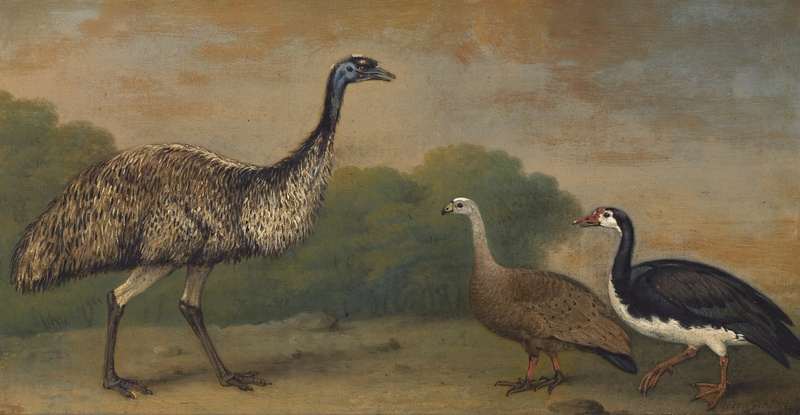common emu (Dromaius novaehollandiae), Cape Barren goose (Cereopsis novaehollandiae), magpie goose (Anseranas semipalmata) Artist Henry Bernard Chalon (1770–1849)
Title An Emu, a Cape Barren Goose and a Magpie Goose, in a landscape
Date 1813
Medium oil on canvas
Source: https://commons.wikimedia.org/wiki/File:Henry_Bernard_Chalon_-_Emu,_Cape_Barren_Goose_and_Magpie_Goose_(1813).jpg
The common emu or simply emu (Dromaius novaehollandiae), also known as great emu, is the second-largest living bird by height. It is endemic to Australia where it is the largest native bird and the only extant member of the genus Dromaius. The emu's range covers most of mainland Australia. Emus are soft-feathered, brown, flightless birds with long necks and legs.
The Cape Barren goose (Cereopsis novaehollandiae) is a large goose resident in southern Australia. The species is named for Cape Barren Island, where specimens were first sighted by European explorers.
The magpie goose (Anseranas semipalmata) is the sole living representative waterbird species of the Anseranatidae family. It is a resident breeder in northern Australia and a vagrant to southern New Guinea. The species was once also widespread in southern Australia, but disappeared from there largely due to the drainage of the wetlands where the birds once bred.
